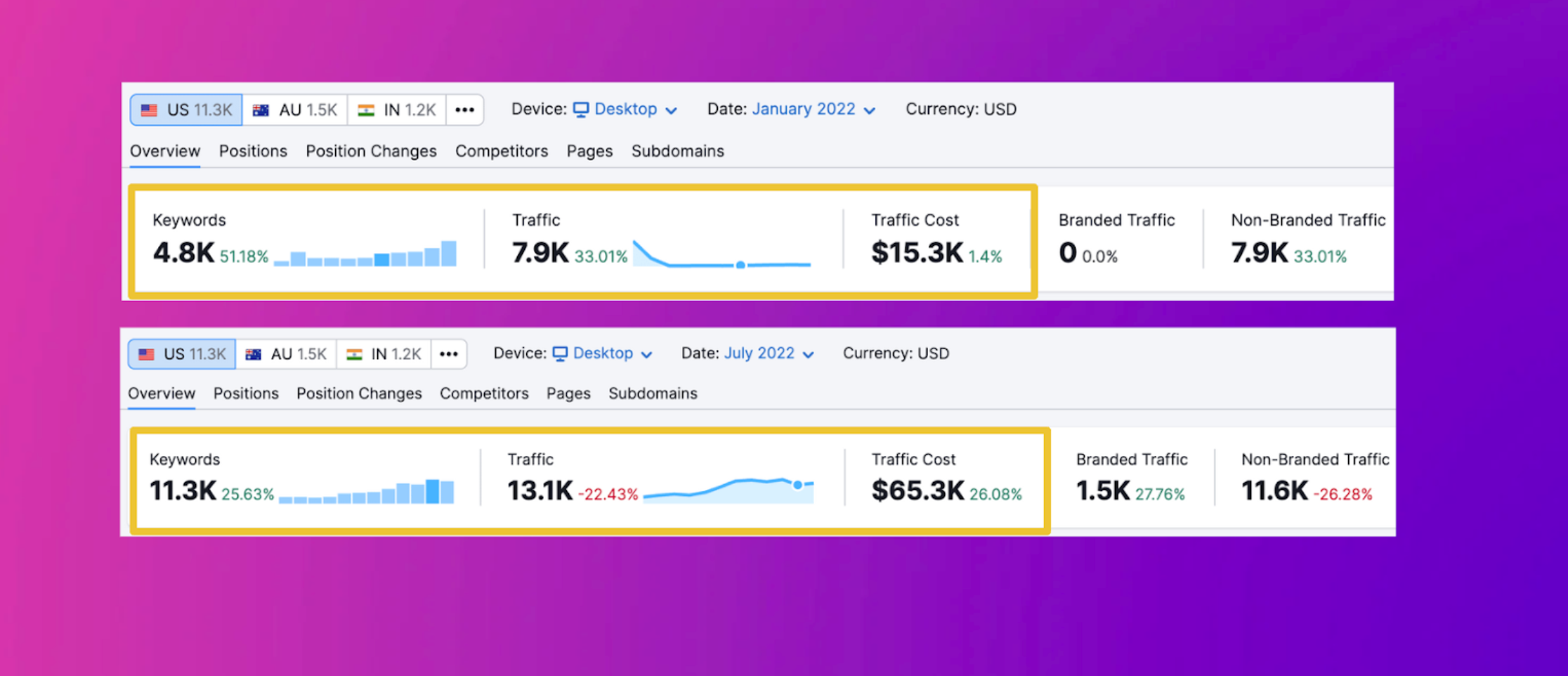As a part of our Foundations, Growth, Scale™ process, we ensure there are no traffic or conversion leaks happening on the website before we focus on building new assets. We quickly identified several issues that, when fixed, would have a huge and rapid impact on the website.
Website not communicating properly with Google
There were several ways that the website failed to communicate properly with Google, which meant that even the new, excellent content that might have been pushed out would have never been picked up.
There were pages that hadn’t been crawled in over 30 days, which meant Google only knew about the outdated versions—any improvements made wouldn’t help rankings until they could be crawled. Additionally, there was content within Javascript that Google couldn’t read, meaning once again it couldn’t get crawled and indexed properly.
Among a slew of other issues, we prioritized what would have the highest impact on Softr’s MRR. Fixing these issues, before even publishing a single page of content, resulted in a 125% increase in paid signups in the first 2 months.
Competing with Airtable for branded keywords
Since Softr is built to be used with Airtable, a large part of they keywords we wanted to target included the word “Airtable”. While these keywords were bottom-funnel for Softr, Google considered them to be navigational keywords, which means it thinks that users are searching for the Airtable website.
The top 3 positions were always saturated with Airtable pages, and it became increasingly challenging to make it past those. Although we still made it in the top 5, we needed to be in the top 3 for our bottom-funnel keywords to make a significant impact on MRR.
We had to get more creative with our keyword research. When it came to non-Airtable keywords, some of the highest purchase intent keywords included things like “client portal“.
That was an important keyword, but as a part of building a MRR-generating SEO model, we need to identify all the other ways people might describe a product like Softr.
This is where customer interviews and customer research becomes vital–by talking to customers and finding users online, you get a wealth of information about how people describe a product that you’d never find through a tool like Ahrefs or SEMRush.
We do not rely on these tools when doing keyword research, since we’re seeking opportunities that will truly attract an audience that is likely to purchase over one that’s just likely to click.


